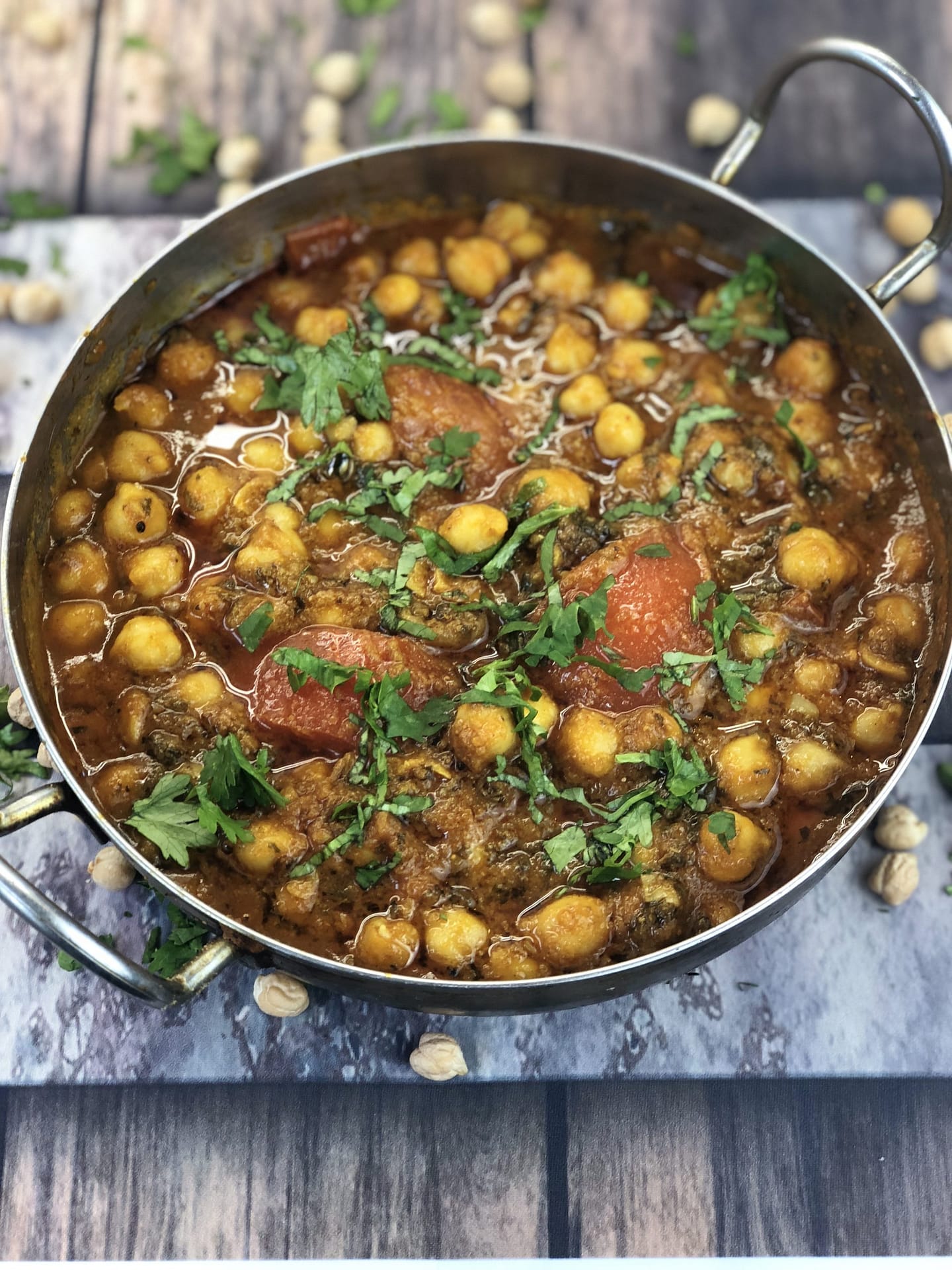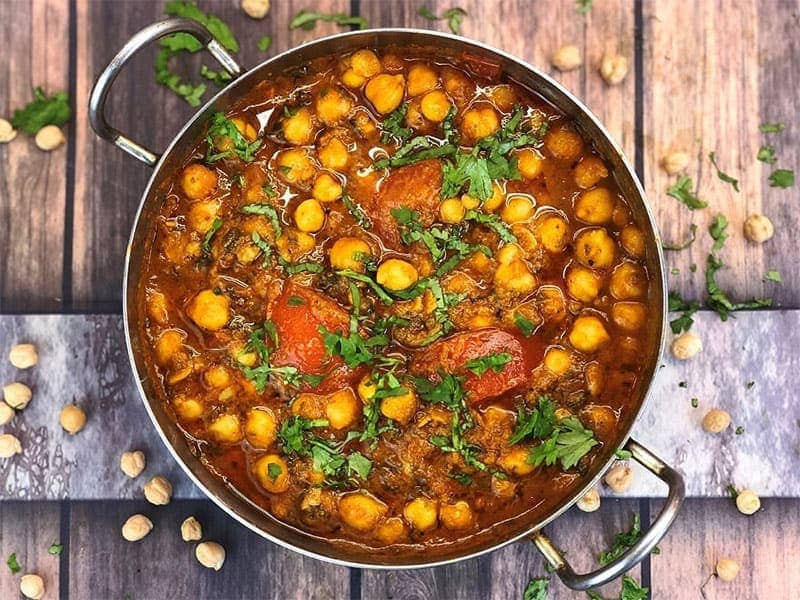Chickpeas (Chana) are incredibly popular throughout South Asia and beyond. As with all pulses they are relatively cheap and packed with protein, so they form an important part of the diet, especially for vegetarians and vegans.
Chana masala (referred to as ‘chole’ in Punjabi cuisine) is a famous Indian chickpea dish, and is an example of how basic, cheap ingredients can be turned into a hearty, nourishing meal with amazing tastes and textures. Amchoor (dried unripe mango) powder is traditionally used as a souring agent, although lemon juice can be used as a less preferable substitute.
The balance of sweetness in my recipe comes from the very thick and caramelised base gravy.
This recipe serves one person as a main course or two to three as a side dish. It’s from my second book, Indian Restaurant Curry at Home Volume 2.
Watch the Video
INGREDIENTS
- 3 TBSP (45ml) Oil
- ½ tsp Cumin Seeds
- ½ tsp Mustard Seeds
- 100g Onion, cut thinly into semi-circular or quarter-circle slices
- 1½ tsp Ginger/Garlic Paste
- 1 tsp Kasuri Methi
- 1½ tsp Mix Powder
- ½-1 tsp Kashmiri Chilli Powder
- ¼ tsp Garam Masala
- ½ tsp Salt
- 280ml+ Base Gravy, heated up
- 4 TBSP Tomato Paste (see Notes)
- 200-250g cooked Chickpeas. A 400g tin contains the required amount when drained. You can use dry Chickpeas but they will need soaking overnight and cooking first (see Notes below)
- 2 TBSP Coriander Stalks, very finely chopped
- 1½ tsp Lemon Juice
- 1-3 fresh Green Chilli, thinly chopped widthwise (optional)
- 2-3 tsp Onion Paste (optional)
- 2 fresh Tomato quarters
- ¾ tsp Amchoor (sour Mango) Powder (optional)
- 2 tsp fresh Ginger, thinly sliced into matchstick shapes (optional)
- Fresh Coriander Leaf, finely chopped (for garnishing)
SPACEHOLDER

METHOD
- Add the oil to a frying pan on medium high heat.
- Add the cumin seeds and mustard seeds. Stir diligently for 30-45 seconds to infuse the oil with flavour, or until the mustard seeds start popping.
- Next add the onion. Fry for a minute or two until softened but not browned, stirring often.
- Now put in the ginger/garlic paste, stirring until the sizzling subsides.
- Add the Kasuri methi, mix powder, Kashmiri chilli powder, garam masala, salt, and a small amount of base gravy (e.g. 30ml) to help the spices fry without burning.
- Fry for 20-30 seconds, stirring constantly.
- Add the tomato paste. Turn up the heat to high while stirring constantly for 30-40 seconds, or until the oil separates and tiny craters appear.
- Add the chickpeas and the coriander stalks. Mix well into the sauce.
- Now add the first 75ml of base gravy, stir into the sauce, and leave on high heat (not stirring) until the sauce has reduced a little, and craters form again.
SPACEHOLDER
- Add a second 75ml of base gravy, stirring and scraping the bottom and sides of the pan once when first added, and allowing the sauce to reduce again.
- Add the lemon juice and the optional green chilli and onion paste.
Now add 100ml of base gravy. Stir and scrape once when first added. - Leave to cook on high heat for 4-5 minutes, or until the sauce becomes very thick and the chickpeas have softened. Add a little extra base gravy if desired to thin the sauce out, as to your preference. Avoid stirring/scraping unless the curry shows signs of imminently starting to burn.
- Put in the fresh tomato and the optional amchoor powder a couple of minutes before the end of cooking.
- Taste and add more salt or lemon juice/dressing if desired.
- Serve garnished with fresh coriander and the optional ginger juliennes.
NOTES
- Spoon measurements are level. 1 tsp = 5ml, 1 TBSP = 15ml.
- If you are starting off with dry chickpeas you must first soak them overnight in plenty of water, and then simmer them for 1-1½ hours, or until tender.
The recipe for the optional onion paste can be found in Volume 1. - ‘Tomato Paste’ is either a) double-concentrated tomato puree mixed with 3 parts water, b) Blended tinned plum tomatos, or c) Passata.





0 Comments